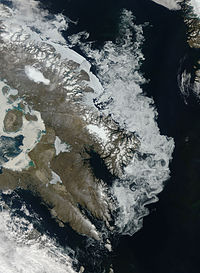The posted coordinates will bring you to Seneca Lake State Park. During the following times a $7 fee will be charged if you want to drive your car into the park.
5/9/15 - 6/7/15: 10 AM - 6 PM, weekends & holidays
6/13/15 - 9/7/15: 8 AM - 6 PM, daily
9/12/15 - 10/12/15: 10 AM - 6 PM, weekends & holidays
Free parking is also available at either of the parking locations provided. It is a beautiful walk along the lake and many people enjoy walking and biking along the trail here.
There are (11) Finger Lakes. They are (from West to East) Conesus Lake, Hemlock Lake, Honeoye Lake, Canandiagua Lake, Keuka Lake, Seneca Lake, Cayuga Lake, Owasco Lake, Skaneateles Lake and Otisco Lake.

Each of the lakes originates as a north flowing stream or river. Two million years ago, during what is called the Pleistocene glaciation or the most current ice age, part of the Laurentide Ice Sheet began to move over the Central New York area. The Laurentide Ice Sheet covered most of Canada and the northern United States. Canada’s Baffin Island still holds a large remnant of the Laurentide Ice Sheet called the Barnes Ice Cap.

Seneca Lake is the largest of the 11 Finger Lakes. It covers over 42,000 acres and spans 3 counties between the cities of Geneva on the Northern end and Watkins Glen on the Southern end. It has a max depth of 618 ft (188 m) at its deepest portion and is the deepest lake in the state of New York. It flows from South to North and empties into the Cayuga-Seneca Canal.

Seneca Lake, along with the others, was carved by a series of advances and retreats of the Laurentide Ice Sheet. This ice sheet moved southward and gouged deep trenches into the streams and rivers that already existed. This process occurred several times between 2 million and 15 thousand years ago. Glacial debris left behind by the receding ice, acted as dams at the Southern end of the basins. When the weather warmed and the ice sheet began to retreat, it left behind Seneca Lake and the other 10 Finger Lakes. The basins filled with water from the melting ice sheet.
To log this Earthcache you must email me the answers to the following questions. Do not post the answers in your log. Use the cache page and the sign at the posted coordinates to help you answer the questions.
- What is the name of the ice sheet that covered what is now known as the Finger Lakes area? Where is the remnant of this ice sheet and what is it called now?
- Briefly describe, in your own words, how Seneca Lake was formed. No need for more than 2-3 sentences.
- Notice the large retaining wall at this location. Estimate how many feet below you the water level is. There is no retaining wall at the south end of the lake. Why do you think that is?
- The sign is currently missing. Either take a guess or search for how deep Seneca Lake is.
According to the sign, the rock bottom of Seneca Lake is more than how many feet down?
If you like, post a photo of you/your group at the posted coordinates in your log entry.
REMINDER: If I do not receive an email from you within 7 days with the answers to the logging requirements, your log will be deleted. It is fine to send in answers for a group, just mention who is in the group in your email or message to me.
| I have earned GSA's highest level: |
 |

Sources:
"Finger Lakes." Wikipedia. visit here
"Seneca Lake (New York)." Wikipedia. visit here
"What Are the Finger Lakes?" Finger Lakes, New York. visit here